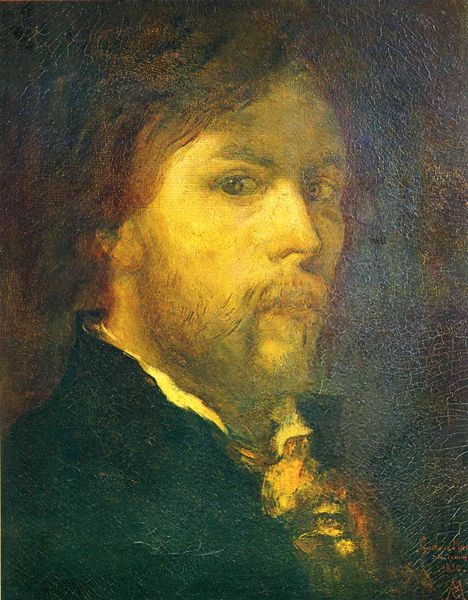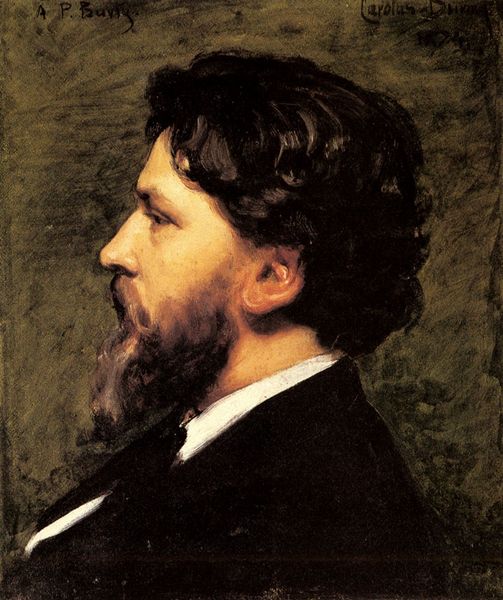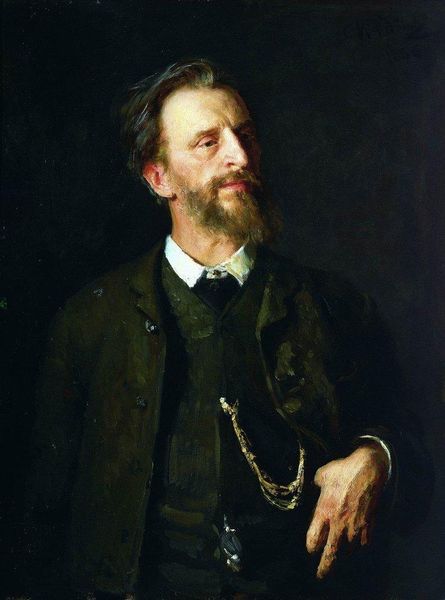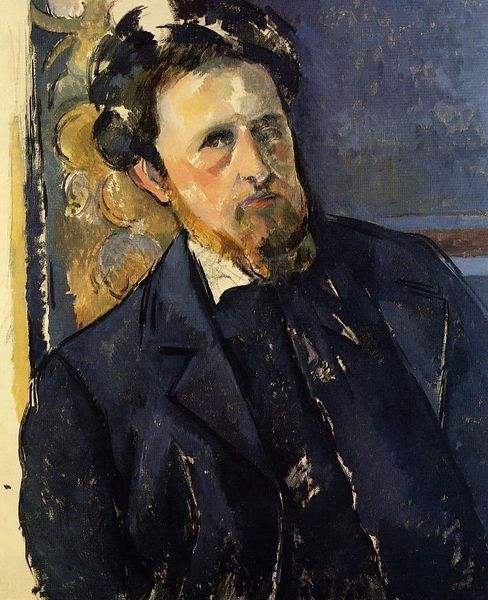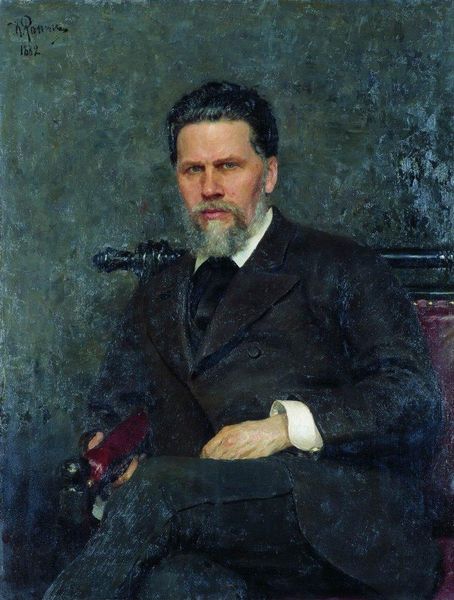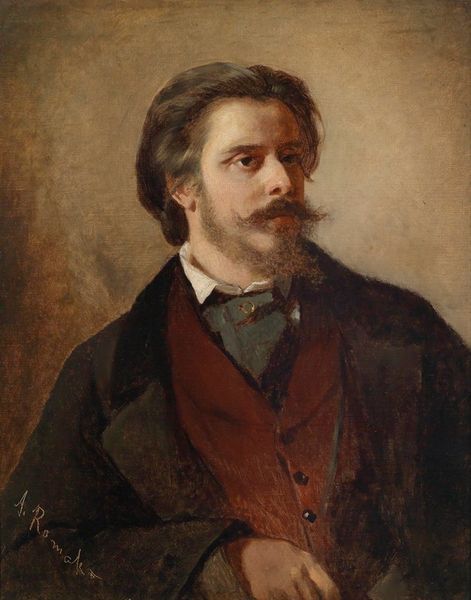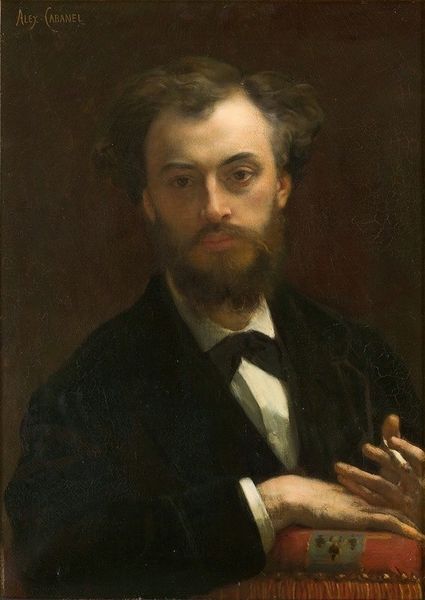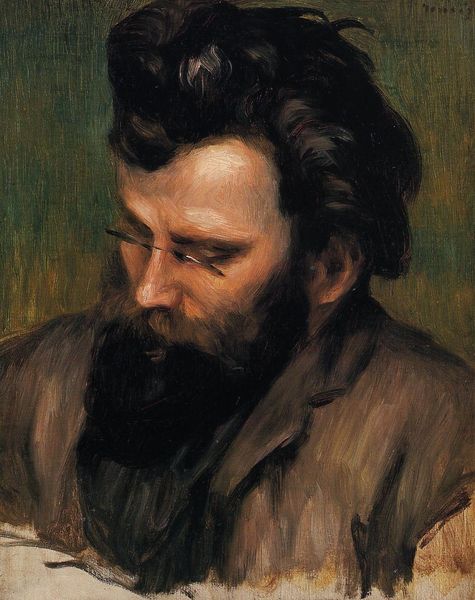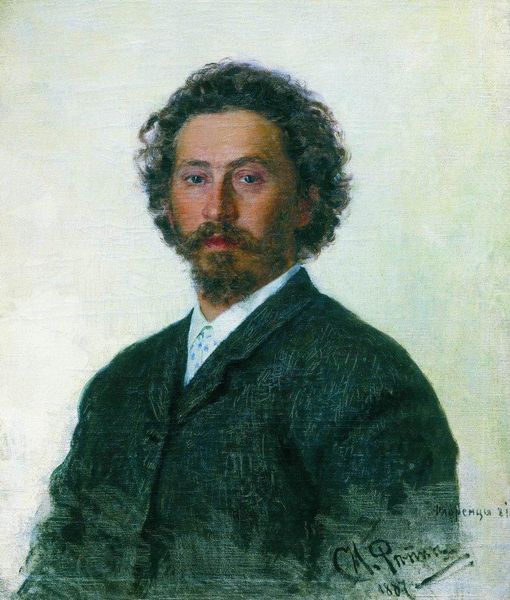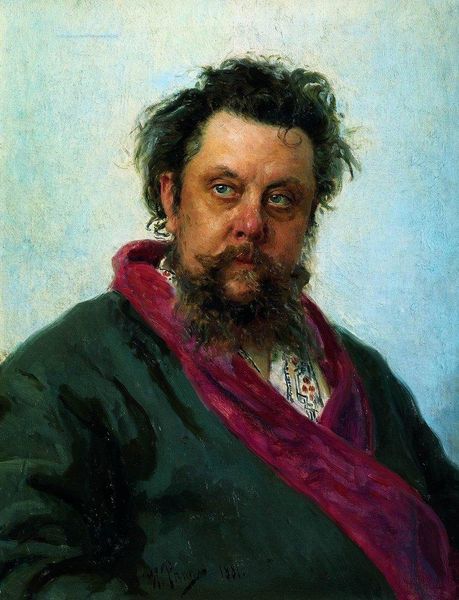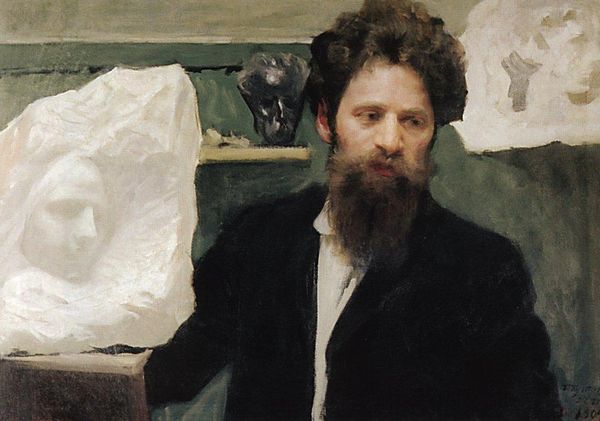
Copyright: Public domain
Curator: Before us, we have Ivan Kramskoy's Self-Portrait from 1874, currently housed in the Tretyakov Gallery in Moscow. Editor: It strikes me as a study in somber self-regard. The dark palette contributes to an atmosphere of brooding introspection. Curator: The Russian avant-garde valued individual expression but, I would argue, also sought to reflect broader societal concerns. Notice how the visible brushstrokes, the texture of the oil paint itself, almost become another layer of portraiture – they are representative of the labour involved in its creation, revealing his skill but also his commitment to this craft. Editor: I see your point. Beyond craft, there's a compelling symbol in the very act of creating a self-portrait. It’s almost a dare to posterity. This image asks, “How will I be remembered, interpreted?” The sternness in his eyes might even be a veiled anxiety about his legacy. Curator: True. And there's also a very literal interpretation, how materials impacted access, perception and the potential creation of works like these; consider the economic context within which artists worked during this era and how this piece could be evaluated not just through its artistic accomplishment, but it's economical factors. Editor: I agree, especially because his gaze has a captivating seriousness. There is something deeply unsettling here, with him almost acting as his own judge and condemned subject, a very personal expression. This reflects themes that he touched in his oeuvre of questioning fate. Curator: Ultimately, a painting, even a self-portrait, isn't merely a likeness. It’s the culmination of specific materials and human labor intersecting with cultural context. The choice of materials is very traditional. But one should never forget the material implications, especially now. Editor: Indeed. Kramskoy’s gaze makes us, the viewers, also reflect upon our very self. The artist’s symbolic power over representation lingers on, as relevant today as it was in 1874.
Comments
No comments
Be the first to comment and join the conversation on the ultimate creative platform.
